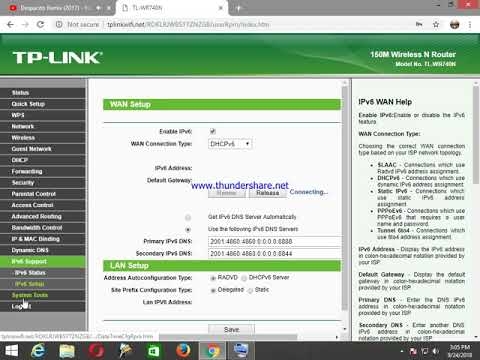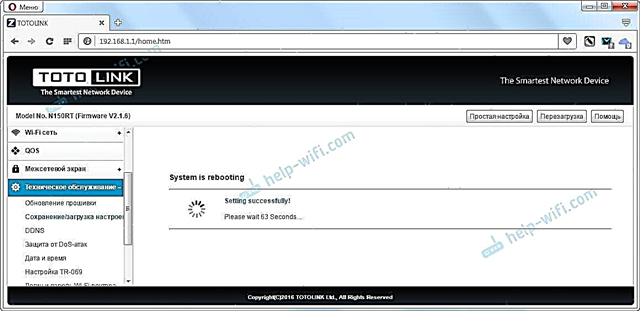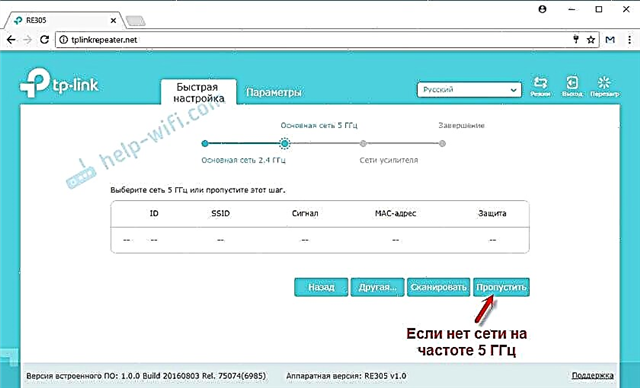In this article, we will try to deal with the problem of constant reboot of the Wi-Fi router. Or when the router has to be manually rebooted. And you have to do this for the reason that Internet access is lost. Usually, this happens both via Wi-Fi and cable.
There really is such a problem, it is found on routers from different manufacturers (D-Link, TRENDnet, Tp-Link, Asus, ZyXEL, Tenda, Netis, etc.), and as practice shows, most often the reason for reboots is not in the router settings, or in the firmware, and exactly the hardware problems. Breakage on the board of the router itself, or something with the power supply. We will now try to understand everything in detail, perhaps even find out the reason, but in most cases everything ends with the purchase of a new router, repair, or replacement of the power supply. In some cases, changing / updating the firmware, or reducing the load on the network, helps. But first things first.
Three cases can be distinguished:
- When we have to restart the router due to the fact that the Internet stops working on all connected devices. The connection to the Wi-Fi network itself usually remains, but access to the Internet disappears. This is the most common problem. Everything starts working only after a reboot, and works until the next "freeze". The router is just buggy, it can work normally all day, or freeze 10 times. Or "crash" only at the time of downloading files, watching videos, online games, and other loads.
- The second case is when the router reboots itself, at different intervals, or at some specific moments. It completely turns itself off, the Wi-Fi network disappears, and turns on again.
- Well, and the third case when the router freezes or restarts when a device is connected... For example, they connected a laptop, some kind of tablet, a smartphone, and that's it, the network hung up. Disconnected the "problem" device, rebooted, and everything works again. There is such a problem, they often write about it, but I do not yet know the specific solution and even the reason.
I described some points in the article: problems with a Wi-Fi router, where I considered the main and most common malfunctions. And below we will try to understand everything in more detail.
Why do you often have to reboot the router?
And immediately a small clarification, reboots have to be done for the reason that the router or modem simply stops distributing the Internet. If in simple language, then it just "hangs". At the same time, there may be a connection to a Wi-Fi network, but there will be no Internet. On computers, there will be a yellow icon with an exclamation mark next to the connection status.

And on mobile devices, there will simply be no Internet connection.
Usually it looks like this: the devices are connected to the Internet, everything works, and at one moment the connection on all devices is lost. We reboot the router, everything works again until a certain point, until it "hangs" again. How often these failures occur depends on the specific case. Maybe once an hour, day, week. If it is rare, then in principle you can still close your eyes to it and measure yourself up. But if often, then this is already a little annoying, and you need to do something about it.
How to find out what is the reason, and find a solution:
- Try to find a pattern. Analyze the moments in which you have to reboot the router or modem. Most often, a failure occurs at a time of increased load on the router. When many devices are connected, when online games are launched on the connected devices, downloading files and torrents, watching online videos, etc.
- If possible, check your router elsewhere, and / or with another provider. For example, at work, or with friends.
- Disconnect all devices from Wi-Fi network and network cable. Leave just one. Disconnect IPTV set-top boxes (if any). See how the router will work.
- You can disassemble the router, or power supply, and see if there are any swollen capacitors. I do not advise disassembling the device if it is still under warranty.
 If you have capacitors like in the photo above, then all the problems are most likely due to them. They can be replaced, or you will have to buy a new router.
If you have capacitors like in the photo above, then all the problems are most likely due to them. They can be replaced, or you will have to buy a new router. - If the router does not freeze, but completely reboots itself, then this may be due to problems in the power supply network. Strong power surges.
- Another reason is the so-called "parasitic traffic". This is an IP packet that can come to the router from the Internet (provider's network). If these requests are sent to your router on purpose, then this is already a DoS attack. I do not think that someone needed to attack your router, but no one is immune from such random requests.
Solutions
1Everything is relative, but if you have a cheap router, or already some old model that has worked for many years, and you connect to it many devices on which the Internet connection is actively used at the same time, files are being downloaded, watching online videos, games, it is quite likely and even normal that the router will not withstand the load and reboot, or freeze. For serious tasks, you need a powerful router. And there are no budget and powerful models. 2 Update your router's firmware. It is not difficult to do this, on our website there are many instructions for different manufacturers of network equipment. You can also perform a full reset, and set everything up again. If flashing / resetting the settings did not help to get rid of the problem, then the matter is not in the settings. 3 If you found out that the problem is related to the load on the router, then there are several options that you can take: reduce the load, actively do not use the connection simultaneously on several devices, disable programs that can load the network in the background. Torrent clients, e.g. 4 If the router does not hold the load due to swollen capacitors, then they can be replaced. In the workshop, or on your own. If you are friends with a soldering iron, then you can do everything yourself. And buy capacitors in a special store, or on the radio equipment market.5 Very often the router starts to fail and live its own life due to problems with the power supply. Power supplies simply do not withstand constant work and fail. Capacitors are also blown out in them. For starters, it's a good idea to try connecting a power supply from a different router. But please note that the other power supply must be the same in terms of characteristics. All technical characteristics are usually indicated on the power supply itself.
Typically, these adapters are all 12 volts and 1.5 amps. If the router works fine with another, the same adapter, then you just need to replace it. It seems to me that such an adapter cannot be bought in a computer hardware store. Therefore, most likely you will have to look somewhere in the radio markets. Take your old adapter with you to buy one with the same specs and plug.
6Replacing the factory firmware with an alternative one. For example, on OpenWRT, DD-WRT. The firmware process itself is not always simple, and there are no guarantees, which will help, but if the router is no longer under warranty, or you do not plan to contact the service under warranty, then you can try to flash it. Search the net for instructions for your router model. There are many reviews when changing the firmware helped to get rid of such problems. True, when the reason is not in the hardware. 7 Disable the WPS (QSS) function if you do not use it to quickly connect devices to a Wi-Fi network (without entering a password). Again, it is highly unlikely that this will help, but you can try. Depending on the manufacturer and model, the WPS (QSS) settings can be found in different sections. For example, on TP-Link:
On ASUS routers:

Firewall settings on TP-Link:

Firewall on ASUS routers:

Remember to save your settings after changing parameters.
9 Overheating. The router, like any other device, can overheat. When the temperature is outside the normal range, of course, the device may not work stably. Hence, various glitches, freezes and reboots. If the case of your router is very warm, then it is likely that the problem is precisely in the overheating of the board.Move the router to a location where it can cool well. Do not cover it with anything and do not lay various objects on all sides. It is advisable that he does not stand in the sun. Which, even in winter, through a window, can heat the device well.
You can disassemble the router and clean the case itself and the board from dust (if it is there). You can clean it with a vacuum cleaner or a can of compressed air.

Be careful not to damage the board. DO NOT wipe the board and other parts with a damp cloth! It's best not to touch the board at all.
10Well, a universal solution - buying a new router. By the way, we have a detailed guide to choosing a router. If the problem router is under warranty, you can contact the service center. It is likely that the device will be repaired or replaced with a new one. Provided that you have not disassembled it yet, and have not reflashed it with some kind of alternative firmware.Freezes and reboots when connecting the device to the router
This is generally some kind of mysterious, I would even say a "dark" problem, which I have read about more than once in the comments. I myself have not encountered such a problem. And, unfortunately, I don't know the solution yet.
In simple terms, after connecting a device to the Wi-FI network of the router, it just freezes. It "releases" it only after rebooting, and again before reconnecting the "problem" device. This happens with completely different routers, and when connecting different devices. At the same time, these devices can work normally with other networks.
The first thing that comes to mind is some kind of conflict. IP addresses, MAC addresses, etc. There have already been attempts to sort out this problem. I just gave some advice to the person who faced this. We changed different parameters and tried everything we could. So nothing happened. The smartphone simply "paralyzed" the router until the next reboot. It's a shame that no one has shared the solution. If it is, of course.
If you have any useful information on this problem, please write in the comments. I will be interested in learning something new, and visitors to help-wifi.com will find this information useful. We are grateful!
In the comments, you can also describe your cases and ask questions.

 If you have capacitors like in the photo above, then all the problems are most likely due to them. They can be replaced, or you will have to buy a new router.
If you have capacitors like in the photo above, then all the problems are most likely due to them. They can be replaced, or you will have to buy a new router.









